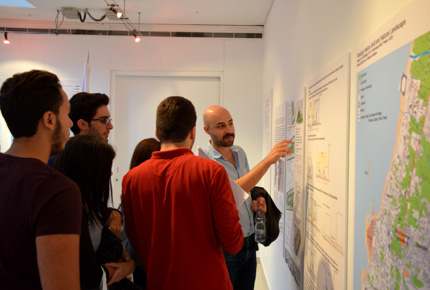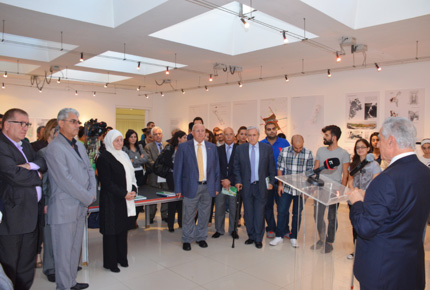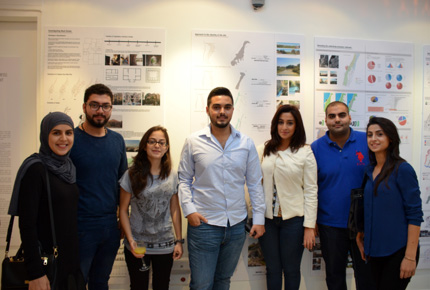An urban plan for Sidon
Architecture students join hands with the Municipality of Sidon and the Hariri Foundation to integrate the Wastani area into the fabric of Sidon.

Visit the exhibition of urban development proposals for Wastani at LAU’s Sheikh Zayed Hall up to and including Saturday 1 November.

“We must make sure our cities have breathing space and avoid losing green space in Saida as happened in Beirut,” said Jabbra.
“In Lebanon, we always work with a top-down approach, but now after this experience, we have the souls of students in our plans and we aim to implement most of what has been developed,” said Mohammed Al Saudi, head of the Sidon Municipality, at LAU yesterday.
Al Saudi was speaking at a gathering of students, professors, civil servants and others involved in the production of an urban development plan for the area known as Wastani, a 3km strip of mostly disused agricultural land between the coast and mountains of Sidon.
The gathering took place in LAU’s Sheikh Zayed Hall and marked the launch of a publication detailing the proposals and conclusions of an EU-funded program that brought together architecture and urban planning students from four Lebanese universities, with the Sidon Municipality and the Hariri Foundation, in a bid to develop an environmentally-driven regeneration plan for Wastani.
“Wastani creates a disconnect in Sidon, separating it in two, and our goal was to try and suture the area and integrate it within the Saida fabric,” explains LAU professor David Aouad, who led five LAU students in the development of a proposal for the area. “We spent three days in Sidon in June at the invitation of the Municipality and the Hariri Foundation to present and discuss our proposal for Wastani with students and professors from other universities.”
All of the universities’ proposals for Wastani were exhibited during the booklet launch at LAU yesterday, where Bahia Hariri – whose family hails from Sidon – was also in attendance representing the Hariri Foundation.
“The future of our city, our country, rests on the shoulders of the knowledgeable and the youth, and the ability to work together,” said Hariri, reflecting the methodology used by the Hariri Foundation in the development of the program.
While the collaborative project focused on urban development, Aouad saw an opportunity to engage more of his students by using the Wastani development project as a foundation for his students’ final year project in Design 10 studio.
“The workshop was mostly about guidelines and a rough master plan, and I thought we could work with students on an architectural level rather than on urban planning, to continue what hasn’t been finished,” explained Aouad, who has gained the support of the Sidon Municipality and the Hariri Foundation in his continued efforts.
LAU President Joseph Jabbra also spoke of his support for the project and the ongoing dedication of LAU’s faculty and students, highlighting in his address yesterday the importance of such programs that are committed to safeguarding our ecosystem, embracing innovation, promoting citizen connectivity and including public green spaces.
“We must make sure our cities have breathing space and avoid losing green space in Sidon as happened in Beirut,” said Jabbra.
Visit the exhibition of urban development proposals for Wastani at LAU’s Sheikh Zayed Hall up to and including Saturday 1 November.
More
Latest Stories
- Student Pharmacists: Serving Through Uncertainty
- Research Highlight: Dr. Elie Bouri on Cryptocurrency
- The Threat of Gram-Negative Bacteremia on Public Health in Lebanon
- A Frontline Like No Other: Students Take Action
- Fostering Healthy Connections in Times of Conflict
- The Crucial Role of Anesthesiologists in Mass Casualty Response
- Another Groundbreaking Discovery by the LAU Genetics Team
- LAU Faculty Recognized Regionally for Teaching Innovation


